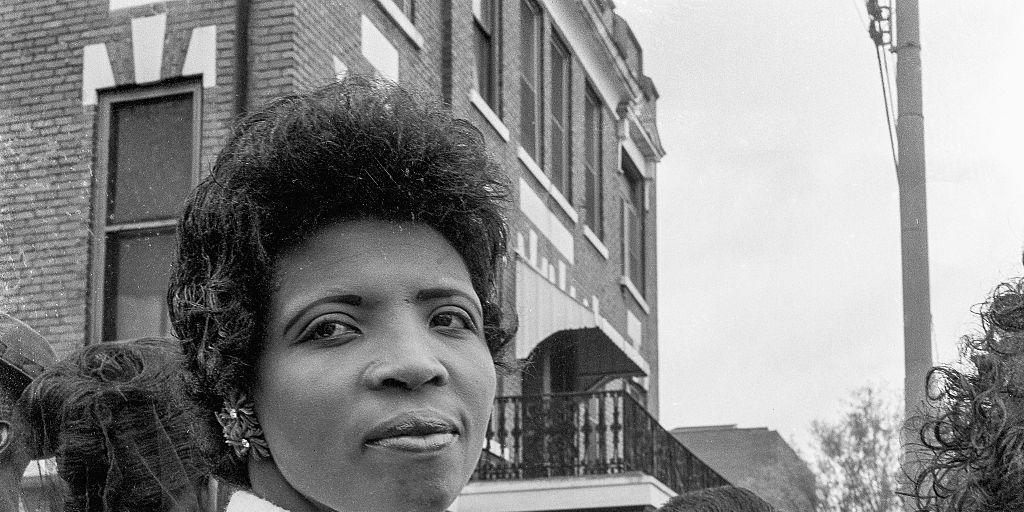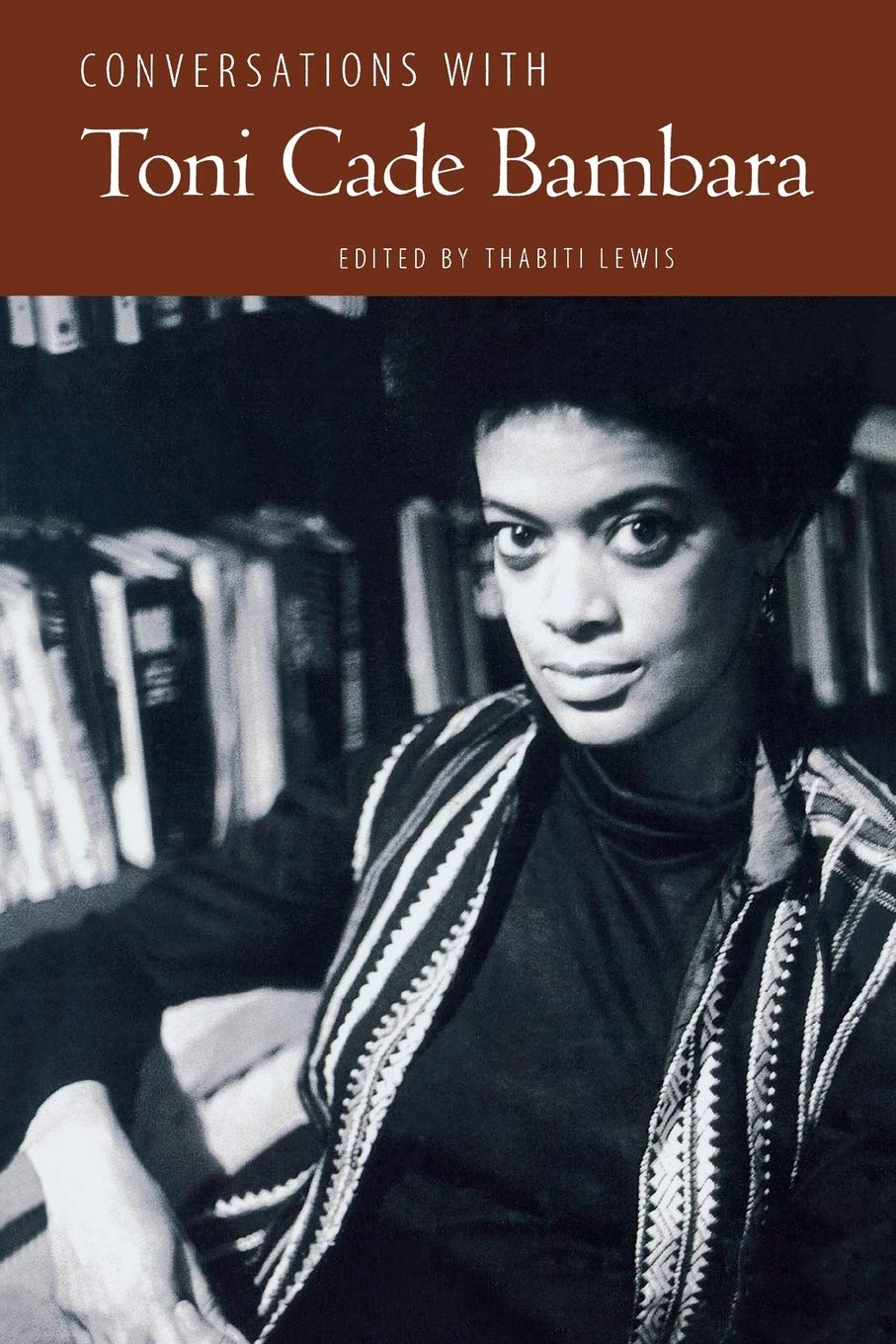Black Fashion in the Novels of Toni Cade Bambara

- Oops!Something went wrong.Please try again later.
Minnie Ransom is cute, okay? She’s a rootworker, a spiritual healer, a crunchy-crunchy lady whose practice transcends earthly concerns. But when we meet her at the opening of Toni Cade Bambara’s nuclear disaster prequel, The Salt Eaters, in the middle of healing a psychically broken civil rights worker, she’s wearing a flouncy red dress drawn in at the waist with kente cloth and a fringed, silky shawl that she handles like a cape. It’s a sensuous expanse of fabric enveloping her, one that makes her look like “a farmer in a Halston, a snuff dipper in a Givenchy.” There’s nothing to suggest that we shouldn’t expect her kind of woman to have on these kinds of clothes, but Bambara winks at our disconnect when a bus driver wanders past with a spot of amused interest. Kind of frisky looking, he thinks.
Across her oeuvre—novels, short stories, criticism, and other writing—Bambara consistently uses clothing as the carrier for a great many things. It holds a bit of description, obviously, which extends naturally into bits of characterization. But she also uses it as a conveyance for ideals and even warnings. Each letter of her work inches us toward the wholesale dismantling of our every oppression, and with her heaps of imaginary cloth, she lets us know that what lies beyond those oppressions is something that’s not just possible, but beautiful.
Often, a writer announces a character’s clothes. A little action happens, then so-and-so enters the frame. We pause. Then, the author drops on us a “So-and-so was wearing such-and-such.” Maybe there’s a little razzle-dazzle as the clothing offers backstory or some poetic descriptions of color and fabric. We’re led to understand that the clothing is a useful ornament. It is so often an interruption in the text, a grunting exercise of hurried exposition. But Bambara, who was a gifted film critic, educator, and occasion maker, invokes clothing as the eye perceives it, whether it’s the character’s or the reader’s.
There’s a cinematic quality to what she does. At her most on-the-nose, in her short “Madame Bai and the Taking of Stone Mountain,” collected in the posthumous Deep Sightings & Rescue Missions, our heroes emerge from a kung fu flick and immediately encounter one-two-three-four a pack of white supremacist hooligans in hooded sweat suits (hmph) and swastika belt buckles. Just before, Mustafa swings his “elegantly draped coat” around a fellow traveler “like a cape” to offer her respite from the cold. After bing-bang-boom, the thugs are sent scampering, and we pan across Tram’s action-tensed figure: “His calves strain against denim thighs bulging in front, wind plastering his sweater against his chest so that eight separate segments of abdominal muscles lift like bas relief.” And cut!
Aboard a ferry in the titular story from The Sea Birds Are Still Alive, everyone’s looking at each other’s feet. A grandmother sizes up the “soft cloth shoes” and matching suit of a genteel passenger. A country woman spits in the direction of “two new black shoes” belonging to a soldier who’s part of the forces occupying her village, and who won’t return her gaze. The ship’s captain gazes down “to stuff newspaper in his shoes to muffle the vibrations” from his raggedy vessel’s engine. He in turn glances at the city-living landlord who makes an annual pilgrimage to collect rents and votes “in traditional dress, the incongruous leather shoes mocking the ploy.” There’s a revolution on, and each glance is a furtive scan for information. Everyone’s tired, or scared. Everyone’s feet hurt. Anglo foreigners buzz about in “dazzling shoes,” but even they just want to kick their feet up.

In a sequence from Bambara’s epic novel Those Bones Are Not My Child, one that rivals the D-Day scene in Saving Private Ryan for its frenetic shock and terror, a day care center blows up. The mess is as gutting as it sounds, especially in the context of a fictionalized account of that infamous spree of Atlanta child murders. Bambara’s camera jumps erratically, encountering things and picking up sounds it’s too unbearable to dwell on. We encounter a rash of strangers in domestic trim, a shower cap who recalls that the blast “sounded like someone was rending fabric,” except “no fabric in the world tears like that.” A man in the plaid lining of an overcoat disappears into the shock of what he’s witnessing. But others are leaping into action: A tattersall vest carries a child to safety; a bathrobe offers bracing restraint to a woman who’s understandably losing it; a woman in a floral apron insists on documenting the pre-explosion milieu for an outstretched microphone. (The appearance of a sturdily outfitted observer in “a long, gunmetal-gray slicker with silver galosh closings and new Wellington boots, silver stripes around the tops,” whose presence prompts one observer to growl, “I didn’t know they had Pierre Cardin designing for the bureau,” is so chilling to both the reader and the characters of concern that they spend the rest of the novel keeping tabs on him.) Even in such their fragile, exposed state, Bambara nudges us to realize, these people found a way to see to each other’s needs.
Sitting across Minnie Ransom in that opening scene from The Salt Eaters is Velma Henry. Neither is she a stranger to a nice garment: At a dinner where she attempts to draw her man across a restaurant booth and back into her life, we look down with her at her “velour blouse, brown, crocheted,” the kind of shirt that would have put him “under her spell” before their troubles. But he slips away, and so does so much else—during the healing session, she sits naked underneath the thin shield of a hospital gown. What’s more, beautiful garments are the thing that triggered the breakdown necessitating her treatment in the first place.
After spending her day getting muddied and bloodied in SNCC-standard overalls (see: Tanisha C. Ford’s chapter on them in her book Liberated Threads) during a protest march, she drags herself to a nearby hotel’s phone only to encounter the speaker from the culminating rally. He had arrived in a limo, hopping out in his Sunday best: “Then the shiny black boots stepping out onto the parched grass, the knife-crested pants straightening taut, the jacket hanging straight, the blinding white shirt, the sky blue tie.” While she’s about to pass out from exhaustion, he and a bevy of female companions cavort off to a room with silver ice buckets and red silk pajamas. “A field of red silk,” Bambara writes. “No bib overalls. No slop jars here.” The yawning chasm between his professed dedication to the struggle (which might entail some measure of actual solidarity with Velma and her difficult work toward collective liberation) and his private opulence is the thing that breaks her.
Bambara deploys brand names sparingly and often at a distance: In Those Bones, besides that Cardin crack, a limo driver overhears a trio of fashion buyers chatting about Bill Blass designs from the cabin of his limo as he drives; in the namesake essay from Deep Sightings, Bambara spies a woman’s Armani lapel from her seat on a bus passing by a high-rise’s lobby. But what makes her Salt Eaters invocation of Halston and Givenchy so thrilling is that it’s used as a shorthand for a small touch of considered collage rather than a marker of hierarchy. Like Halston, like Givenchy. We don’t have to go into the world naked. It can be painful being stuck with ourselves: In Those Bones, as Zala begins the long process of recovering from the trauma of her son’s disappearance, she comes to the realization that she will have to “learn how to hem up the dragging flesh of her life with careful, tiny stitches.” But chasing status and material comfort as we seek to cover ourselves can be a corrosive and dangerous endeavor, Bambara tells us. Hold fast to the care that makes things good, she teaches us, and your soul will thank you.
You Might Also Like

